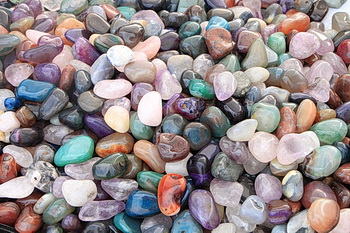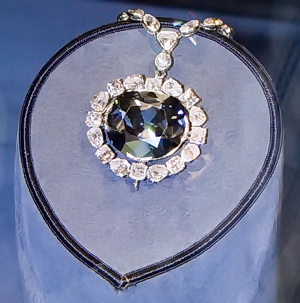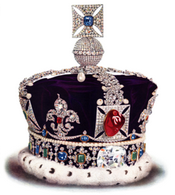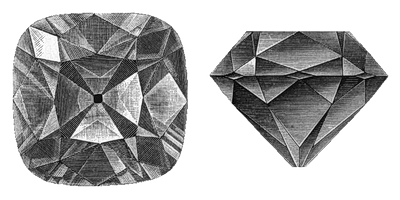
Some popular jewels have been jaded with stories of death and destruction. Folktales of warlords fighting terrible battles, kings and queens going through tragic ends, Russian princesses jumping off towers, fortunes down the drain careers destroyed, companies going bankrupt, marriages breaking off… all because of some shiny stones that some people associate with a curse.
Even though some gems are linked to curses and misfortune, there are also many fabricated stories that one must beware of. These tales are believed mainly because certain gems have mysterious origins, along with an aspect of glamour that most people buy into.
Tales about cursed gems also work as a lesson. For example, there are loads of stories in which these gems were plucked from the eye of a Hindu idol. That goes to show that if you want your stone to bring good luck, do not steal them in the first place and do not betray anyone to have the gems in your possession.
Below are some supposedly cursed gems that you need to know about:
Hope Diamond

One of the most famous cursed gems, the Hope Diamond’s tale starts with Jean-Baptiste Tavernier – a French merchant traveler. Tavernier purchased the deep blue stone in 1668 from India. Legend has it that the traveler was torn apart by dogs, leading to his death. However, the truth is that Tavernier lived a long life as he traveled all over the world and purchased a number of jewels.
The Hope Diamond soon became known as the “French Blue” and was sold to King Louis XIV. In 1909, the gem found its way to Pierre Cartier, who was aware that the market for pricey gems was not big.
However, in the past, Cartier had been able to sell expensive precious stones to Washington DC’s socialite and heiress, Evalyn Walsh McLean, so he tried his luck with her again. McLean first refused as she did not like the setting of the gem. However, after Cartier changed the design, she seemed more inclined to buy it. Cartier knew that he had to use the “curse” of the gem as a selling point since his customer had always felt as if traditionally unlucky gems were lucky for her.
But things didn’t go as planned. What started with a false curse began to actually develop in McLean’s real life. She threw many huge parties where she would hide the gem in the house and her guests would have to look for it. Then things started to backfire.
Her first-born son died in a car accident. Her husband left her for another woman, destroying all the family fortune. He then lost his life because of his addiction to alcohol. Moreover, the family business went bankrupt and McLean’s daughter died after overdosing on sleeping pills. The year after, McLean committed suicide and the gem was sold to clear the debts of her mansion.
The Black Prince’s Ruby

You’ll find this big, red gem in the center of England’s Imperial State Crown. In fact, you may even have noticed it in numerous coronation photos. However, this stone is actually a red spinel – not a ruby. It is also commonly known as “The Great Imposter” and has been linked to a series of dreadful historical events.
Before the gem found its way to English rulers, it resided with the Sultan of Granada. Pedro the Cruel found this gem close to the corpse of the Sultan of Granada after he was stabbed to death. Soon after Pedro the Cruel obtained the stone, his reign was taken over by his half-brother, who then gained possession of the gem. However, his half-brother, Edward, soon fell prey to a mysterious disease and lost his life after a few hours.
Lots of other incidents regarding diseases and death circle the Black Prince’s Ruby. For example, in 1415, when Henry V wore the gem to the Battle of Agincourt, it is said that he almost lost his life. Additionally, Richard III wore it at the Battle of Bosworth, where he was killed.
The Regent

Wikimedia Public Domain
Today, the Louvre Museum holds the Regent Diamond in the Apollo gallery. However, it was originally found in the 1700s in India. Legend has it that a slave stole the gem from a mine and hid it inside a wound in his leg, which was self-inflicted. After collaborating with an English sea captain, the slave planned to get the gem to another country. However, the captain was overcome by greed- he threw the slave in the water and kept the jewel himself, later selling it in the marketplace. However, the slave had laid a curse on the Regent Diamond.
Thomas Pitt, an English governor in Madras, purchased the pale-blue stone, and in 1717, he sold it to French Regent Philippe II of Orleans. That is how the stone received its name. Once again, the gem was stolen during the French Revolution. However, it managed to be recovered. By the time it was handed to Napoleon 1, who laid the stone in the handle of his sword, it was heavily cursed. Today, you will find a display of Napoleon’s sword at the Louvre where every day people come to admire it.
Do you believe the stories of these cursed gems? It must be kept in mind that not all stories you read on the internet may be accurate, and loads of research has been discovered that has proven that some stories may have been fabricated. Remember to fact-check before believing any story!
